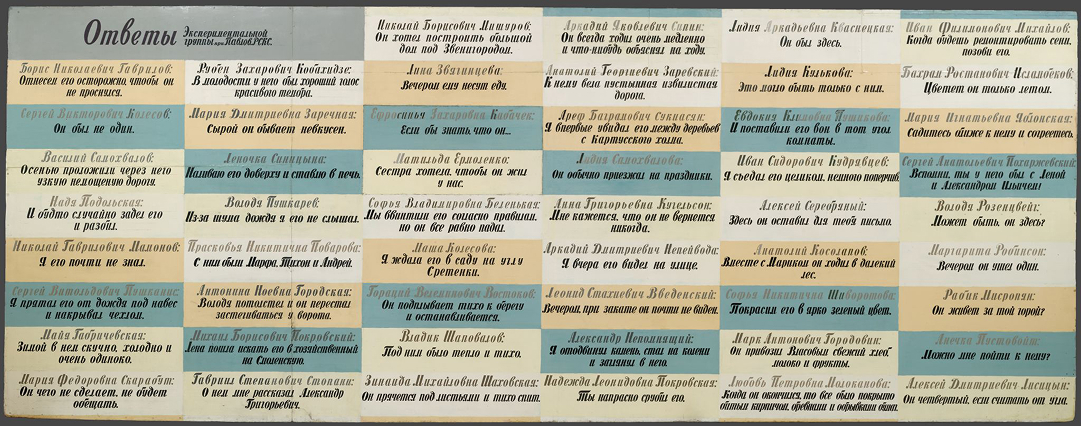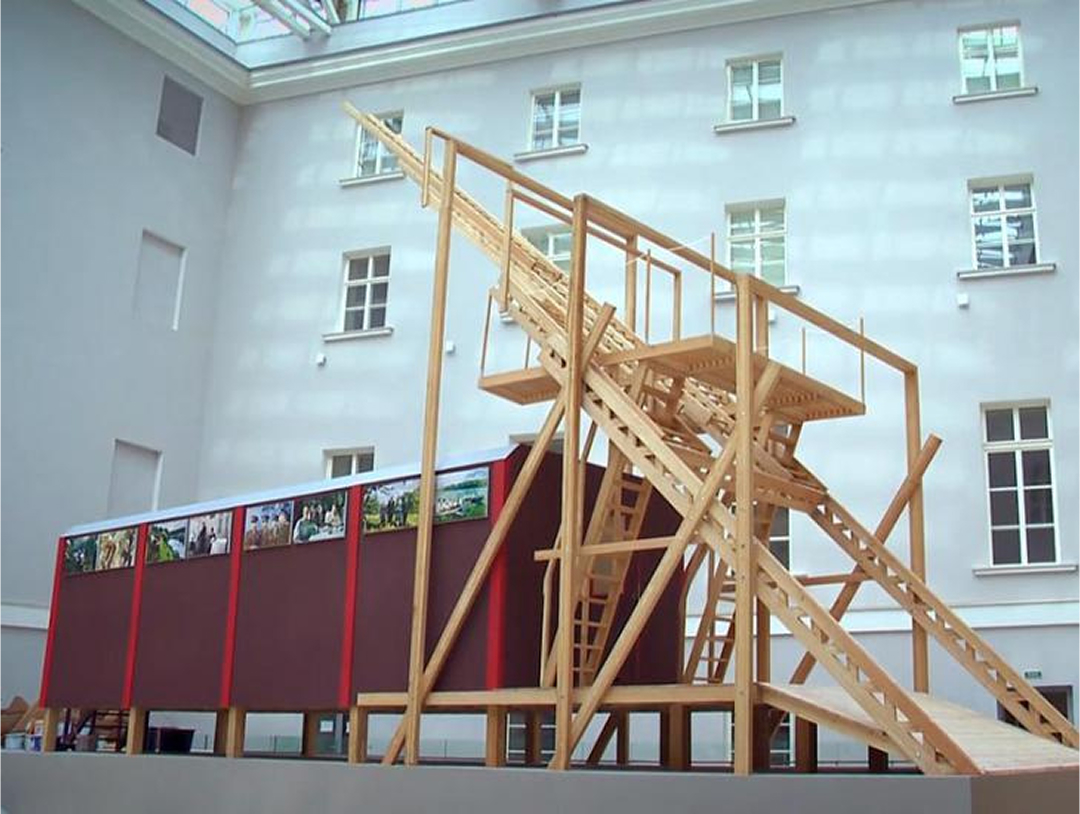The universe
of Ilya and Emilia Kabakov

Ilya Kabakov is one of the most famous Soviet and Russian contemporary artists, a key figure of the Moscow Conceptualists movement and the Soviet nonconformist art.
From 1989 until his death Ilya co-authored with his wife Emilia Kabakov.


Ilya Kabakov is the author of The Answers of an Experimental Group, a painting and an art object that would later be recognized as the first work of Moscow Conceptualism. Conceptualists developed their own way working with image and text. They placed great value on the idea that could be conveyed through the means of the art itself: phrases, diagrams, graphs, photos, and drawings.
Not Everyone Will Be Taken Into the Future was the title of a 1983 essay that Ilya contributed to A-YA, an unofficial Russian art revue published in Paris. In this essay Kabakov speaks from the position of the 'little man' and admits his fear of the 'big guns', the icons of Russian avant-garde, in particular, Kazimir Malevich, and the director of the Soviet school of art who dictate which future he should march on into.
The 'little man' theme is one of the most important in Ilya's works. Kabakov's fictional characters let us see the world through the eyes of that little man from Gogol's Overcoat. The little man has a small yet an extraterrestrial dream and turns his fantasy into reality.
Ilya Kabakov created the genre of total installations. He imagines whole worlds that immerse the viewer into a different reality, into the atmosphere of Soviet life, exploring the theme of memory and human existence.


His most well-known installation is The Man Who Flew into Space from His Apartment (1985). The installation's protagonist leaves behind a gaping hole in the ceiling and a catapult-like mechanism.
This work represents the longing to escape the mundane, the dream of freedom and overcoming restrictions. It became the first of a whole series of total installations (large-scale projects that involved working with large spaces).


The Red Wagon installation (1991) features a train car containing various objects and images reminiscent of the Soviet history and utopian dreams.
It explores the themes of movement and change, inviting the viewer to ponder upon the past and how it affects the present.


Much of the Kabakovs' work revolves around angels. The human desire to meet an angel represents the attempt to go beyond the boundaries of the mundane world to be set free both from the material confines and from the red tape.
The How to Meet an Angel installation is an 18-meter ladder that lifts a little man up towards the sky. As Kabakov wrote, "An encounter with your angel or other angels in real life appears to be virtually impossible for many. And given that most people find this absolutely impossible, the mere idea of this possibility seems insane and not up for negotiation, which is completely wrong.
Hard facts and multiple eyewitness accounts suggest otherwise. However, in analyzing those accounts, few paid attention to the place or, to be more precise, the "spatial level" where such encounters tend to happen more often. Upon careful scrutiny one realizes that such encounters are possible or even bound to happen at approximately 1200–1400 meters above the sea level..."


The Stool (Angel and Landscape) (2001) installation revealsthe secret lives of the authors' characters.
The space under the stool hides a perfect private world, complete with a landscape and an angel soaring above it.
of Ilya and Emilia Kabakov